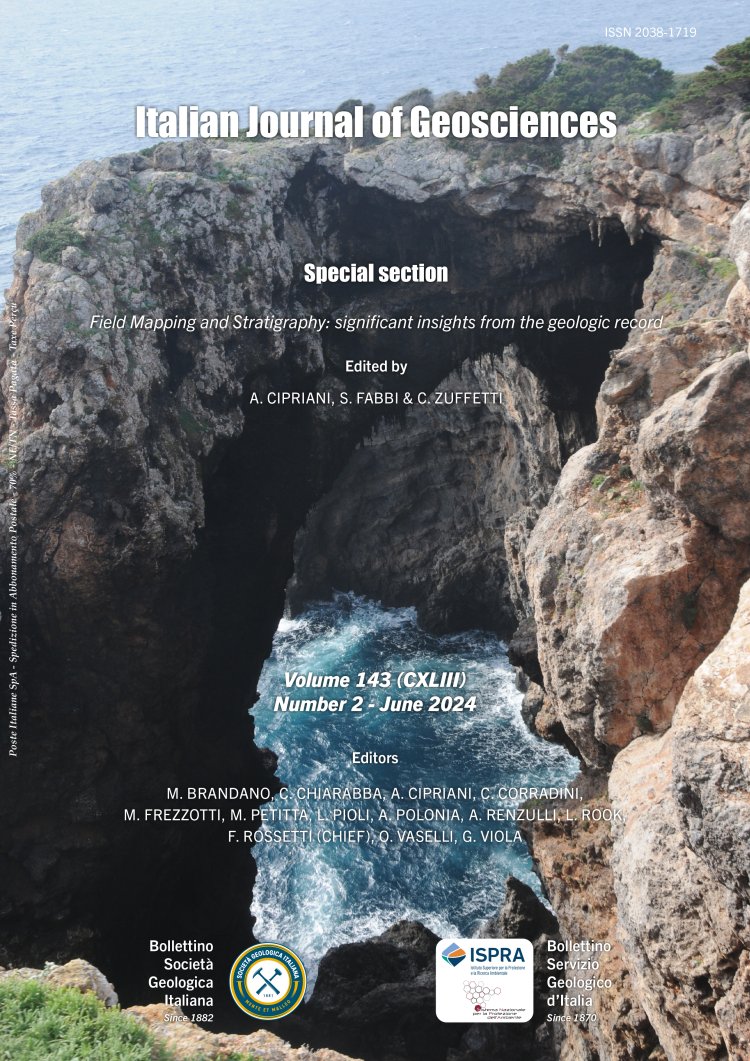
Geological map of the San Giuliano Lake (Southern Italy): new stratigraphic and sedimentological data
Agostino Meo1, Annamaria Mauro2 & Maria Rosaria Senatore1
1Departement of Science and Technology, University of Sannio, Via F. de Sanctis S/N, Benevento, Italy.
2National Museum of Matera, Ministry of Culture, Via Domenico Ridola, 24, Matera, Italy.
Corresponding author e-mail: ameo@unisannio.it
Volume: 143 (2024) f.2
Pages: 175-186
Abstract
A detailed field survey has been conducted with the aim to establish the stratigraphic framework of the San Giuliano area, located 10 km southwest of Matera, Basilicata Region, southern Italy, in the Apennines foredeep. This area is part of the foreland (Apulia Foreland) and the foredeep (Bradanic Trough) domains of the Apennines orogenic system in southern Italy and is well-known in the literature. However, no detailed stratigraphic and sedimentological analyses on the exposed stratigraphy have been presented so far. Beyond the field survey, a section, the Assiolo vertical section, and a borehole (Giuli 1) were sampled for sedimentological analysis to reconstruct the evolution of the depositional environment through the argille subappennine. The local succession is represented by olive grey pelitic sediments of shelf environment that, in the upper part of the succession, show the presence of silty-sandy sediments interpreted as the result of a change from the shelf to the lower shoreface/ shelf transition environments. Furthermore, these coarser deposits, named “Giuliana beds”, are notable because, in 2006, a well-fossilised whale, classified as Balaenoptera cf. musculus, and named “Giuliana” was discovered. The whale is dated between 1.20 and 1.45 Ma, and has an estimated length of about 26 m. A renewed deepening of the basin was affirmed by the occurrence of clayey-silty sediments overlying the whale-bearing sandy facies. Furthermore, it was observed that it is possible to define the stratigraphic architecture of the San Giuliano Lake area as the drowning from nearshore to open sea environment. This framework represents a recurring trend in the in foreland/foredeep contexts in the southern Apennines.
Keywords
geological field mapping, stratigraphy, sedimentological analysis, San Giuliano Lake, Matera, Southern Italy.
Get Full Text